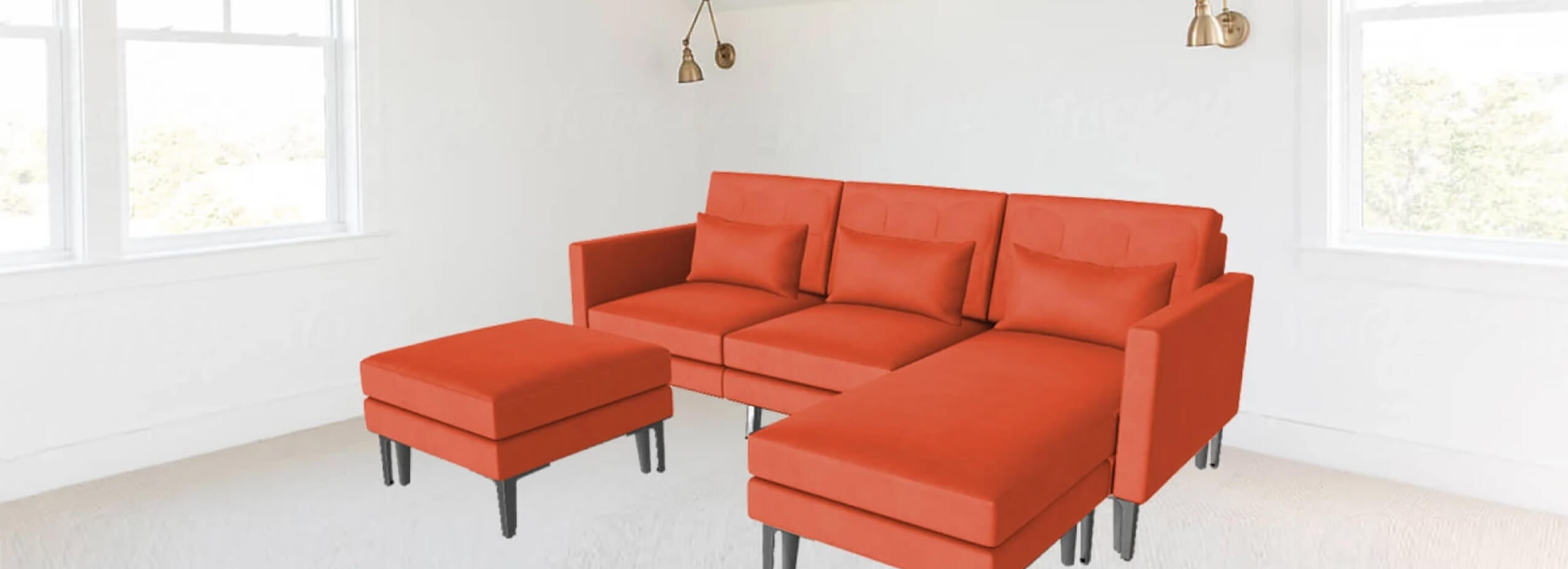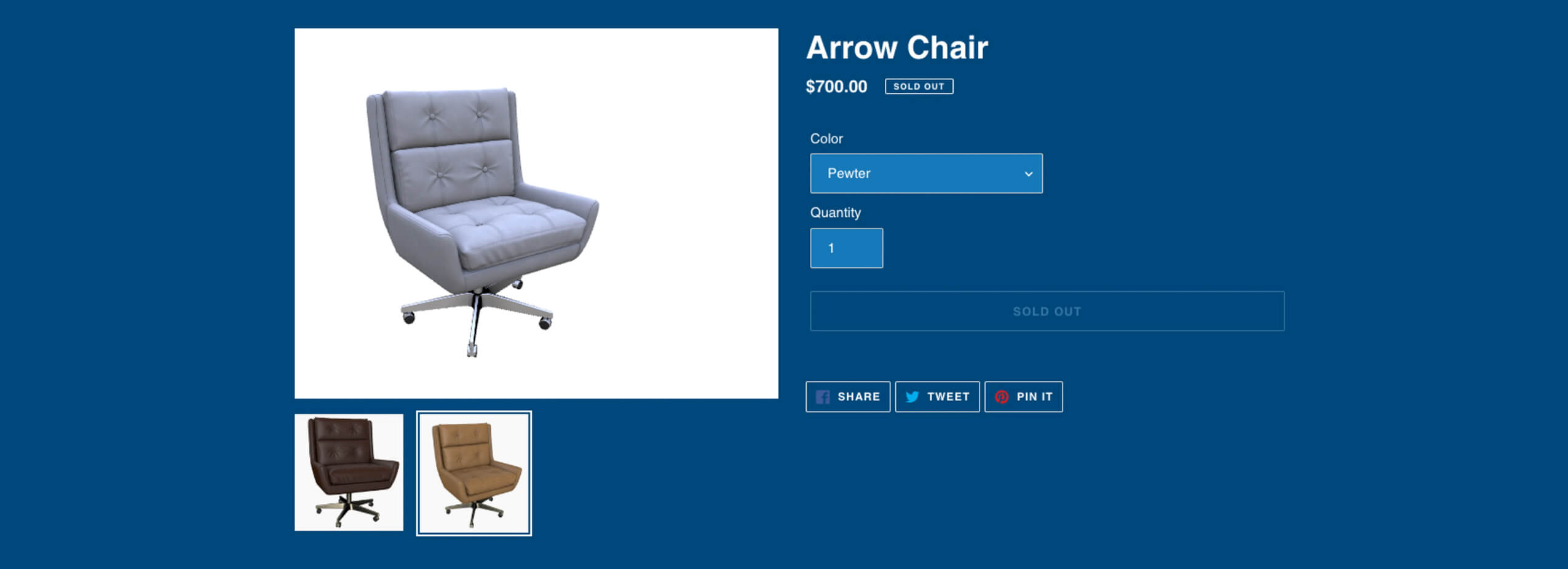
Insights
-
Adding 3D to Shopify sites has driven significant results for merchants, up to a 94% increase in conversions
-
Choosing an integrated 3D solution over Shopify’s native 3D capabilities expands the functionality and value of 3D, delivering more interactive features and the ability to showcase a variety of product options and configurations
-
Augmented reality can be seamlessly deployed on a Shopify site by partnering with a 3D commerce provider
Shopify’s native 3D functionality is a quick, effective way to showcase products in a more immersive way than traditional photo and video. However, in today’s competitive market, the tool’s limited interactivity pales in comparison to the rich product experiences available with 3D configurators and AR for ecommerce. We break down the benefits of adding a 3D configurator to your Shopify site.
3D Configurators for Shopify
Stronger Page Performance
The benefit of Shopify’s native 3D capabilities is the ease of uploading and launching a 3D asset on the product page. However, that ease can come at the expense of performance as the 3D model is simply an upload, and any change in viewing color or configuration means reloading the model and the page’s backend information. Research shows that even a one second delay in page loading can decrease conversations by 7%, and 79% of shoppers surveyed said they were unlikely to return to a site with poor performance.
3D configurators, on the other hand, optimize how shoppers view and engage with detailed and accurate product representations without sacrificing page performance. By streaming higher quality textures, the initial load time of the page is reduced. The experience of flipping between options, rotating and zooming is smoother and more enjoyable with a configurator as well, since switching does not trigger a page reload.
Fully Interactive 3D Experiences
While Shopify’s native capabilities allow for 3D uploads to be added to a product page, these models are not fully functional 3D configurators. Shoppers do not have the ability to view changes and options in real time; in fact they are still limited to the views that the brand uploads as 3D images. As of now, if a product is offered in 10 colors, but only 5 of the colors are uploaded as 3D models, the remaining 5 cannot be viewed in 3D via Shopify’s native solution.
By integrating with a 3D configurator for Shopify, product features can be selected and showcased to display the specific options that a buyer is interested in, without the brand having to upload models of every possible configuration. This creates a more streamlined and performant experience for the buyer, and fewer hours and dollars spent creating assets for brands.
Using a 3D configurator such as Dopple also allows brands to add interactive touches such as animation and product callouts in the 3D window. These added touches enhance the buying experience by providing additional information and creating confidence in purchase for the buyer. For the brand, this additional information can translate to increased cart value, as buyers are more likely to add features or options when the specific benefits can be highlighted.
Branding
Shopify’s wide variety of themes and features provide brands with a solid base on which to build a brand experience. However, as ecommerce becomes increasingly crowded and competitive, the need to establish a recognizable brand experience is becoming critical to success. Product pages are some of the most visible and value laden touch points that brands have on a site. With 80% of customers indicating that the purchase experience is as or more important than the product itself, these are the pages where brands should be focused on creating brand value.
To create a unique experience within the Shopify ecosystem, brands need to leverage a partner to build solutions that work within their selected Shopify theme, while also delivering the brand feel and value. Brand designed controls, selection process, and page layout help shape the buyer’s journey to meet the needs of a brand’s unique buyer, as well as guiding the shopper through an experience more likely to lead to a conversion.

Integration with AR for Shopify eCommerce
Augmented reality has become a major talking point in ecommerce over the last year. With the increased visibility of the technology, demands from consumers for brands to integrate the benefits of AR into their experience have rapidly increased. These demands are not without merit either. AR is more than hype or a fun add on for shoppers to use; data shows that AR enabled products have performed significantly better than their non AR enabled counterparts. According to Shopify, AR enabled product pages showed 94% higher conversions than non AR, and 60% of consumers surveyed said they are more likely to purchase a product if they can see it in 3D or AR.
Shopify does not currently have a native augmented reality function; but instead relies on 3D model uploads and custom coding to create AR experiences. However, choosing the right 3D partner allows brands to continue their buyers’ 3D experience with an integrated AR solution.
Augmented reality from Dopple is designed to work in tandem with our product visualizers and 3D configurators, bringing the exact products that shoppers are viewing on a product page to life wherever they are shopping. Instead of a default product view or preconfigured SKU, buyers can engage with the product in their desired configuration through web enabled AR.
3D for Shopify Drives Results
Shopify is the #1 choice for merchants selling online, with the combination of an easily managed platform and high performing partners that cater to the needs of the wide variety of brands. 3D and augmented reality have begun to leave their mark on ecommerce as a whole, and now is the time for brands to set the bar within their verticals by optimizing the Shopify experience for today’s buyers.
See how easy Dopple makes adding 3D and AR to a Shopify site here.